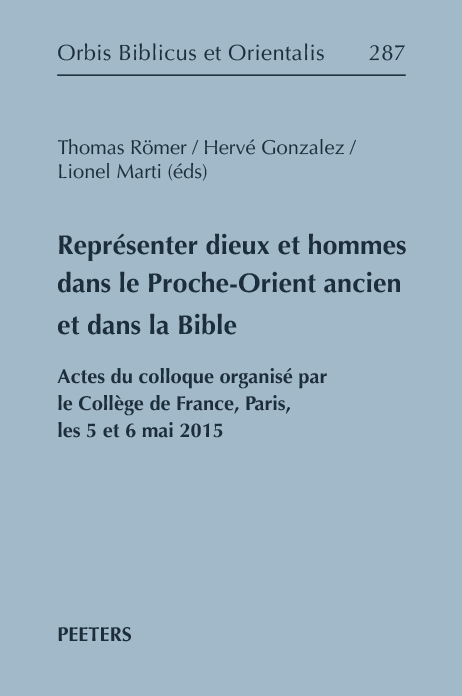year: 2019isbn: 9789042939738e-isbn: 9789042939745pages: XII-386 p.
Quelle est la fonction des représentations du divin et aussi des hommes dans le Proche-Orient ancien? Quelles sont les différentes manières de rendre visible des dieux et quelles en sont les fonctions particulières? Ces représentations matérielles et visuelles permettent-elles de mieux comprendre les cultes officiels et les cultes privés? Quel est le rôle des images dans le culte royal? Est-ce le roi ou tous les humains qui sont «l’image» des dieux? Pour quelles raisons décide-t-on d’interdire des images cultuelles? Y a-t-il des précurseurs à l’interdiction biblique dans le Proche-Orient ou ailleurs? Comment les représentations des dieux et des hommes changent-elles en l’absence d’image cultuelle?Le colloque «Représenter dieux et hommes dans le Proche-Orient ancien et dans la Bible», qui s’est tenu les 5 et 6 mai 2015 au Collège de France, avait pour but d’éclairer ces questions autour de l’image, un sujet central pour l’intelligence des religions anciennes et modernes.
What was the function of representing deities and also humans in the ancient Near-East? Which were the different ways of making gods visible, and the specific functions of these representations? Might these material and visual representations help us to better understand official cults, as well as private cults? What was the role of images in the royal cult? Was the king the only “image” of the gods, or could all humans fulfill this role? Why were cult images forbidden? Does the biblical prohibition have any precedent or parallel in the ancient Near-East, or elsewhere? And how do the ways of representing gods and humans change in the absence of cultic images?
The conference Representing Gods and Humans in the Ancient Near-East and in the Bible, held at the Collège de France, Paris, on May 5-6 2015, sought to shed light on these questions surrounding the image, a critical issue for our understanding of ancient as well as modern religions.
This book is published open access. It can be downloaded here.






No comments:
Post a Comment